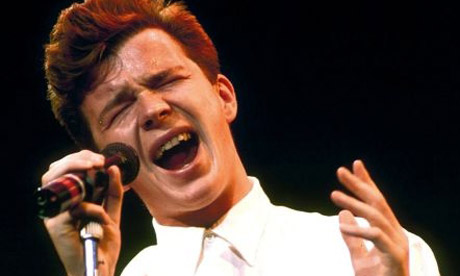By Brigid Schulte
Washington Post Staff Writer

Martha Washington's rarely shown, silk-and-sequin wedding shoes, which once featured glittery buckles, are on display until Feb. 23 at Mount Vernon. (By Gavin Ashworth)
This just in: Martha Washington was hot. Or at least hotter than we thought.
Our image of the mother of our country, vague and insubstantial as it is, is drawn from portraits painted after her death showing a frumpy, dumpy, plump old lady, a fussy jumble of needlework in her lap, wearing what could pass for a shower cap with pink sponge rollers rolled too tight underneath.
But today, 250 years after Martha and George tied the knot, a handful of historians are seeking to revamp the former first lady's fusty image, using the few surviving records of things she wrote, asking forensic anthropologists to do a computerized age-regression portrait of her in her mid-20s and, perhaps most importantly, displaying for the first time in decades the avant-garde deep purple silk high heels studded with silver sequins that she wore on her wedding day.
Take that, Sally Fairfax.
History is about to be revised.
"We always see Martha with a withered face in her old age. But she was quite a beautiful woman in her younger years, and Washington loved her deeply," said Edward Lengel, senior editor at the Papers of George Washington project at the University of Virginia. "What's happening now is revisionist. But I think it's a whole lot closer to the reality of what she was."
Contrary to popular opinion, even among some historians who should know better, Martha was not fat when she married George. Yes, she liked to read the Bible, but she devoured gothic romance novels, too. She capably ran the five plantations left to her when her first husband died, bargaining with London merchants for the best tobacco prices. And unknown to most, while George was courting her she had another suitor, a Virginia planter with much greater wealth and stature. In a little-known letter, Charles Carter wrote to his brother about what a beauty she was and how he hoped to "arouse a flame in her breast."
James Peale painted this watercolor portrait of Martha Washington in 1796, and her grandchildren called the miniature a "striking likeness." (Courtesy Of Mount Vernon Ladies' Association)
"He was clearly sexually excited by her," said Patricia Brady, a historian who wrote the first revisionist biography of Martha a few years ago. "When Martha decided to marry George, she didn't marry him just to be a kind stepfather to her two children. He was a hunk, and I think she decided to make herself happy. People are just starting to see her as a real person."
The fact that so little is known about Martha and that she has been cast throughout American history as First Frump is, in part, her fault. In the days after George Washington died, she, as was the custom of well-known people of her time, burned all their correspondence. So we know George wrote two youthful love letters bursting with yearning and passion to Sally Fairfax, even though she was the wife of his good friend. We have a really bad poem he wrote as a teen to a young Virginia beauty ("Rays, you have, more transparent than the sun . . . "). We have no idea what he wrote to Martha.
Forensic anthropologists used the 1796 portrait to generate an image of what Martha would have looked like in her 20s, inspiring this painting by Michael Deas. (Courtesy Of Michael Deas)
But each generation of Americans, Lengel and other historians say, has played its part in solidifying Martha's stodgy image, transforming her into an icon of demure Victorian perfection in the 19th century and, in the antiheroic 20th century, the mousy, fat, rich widow that dashing and virile Washington married only for money.
Emily Shapiro, a curator at Mount Vernon, wandered through the museum on a recent day, pointing to the most famous images of Martha. All of them are, as one historian describes it, of the double-chinned Old Mother Hubbard variety. To Shapiro, the white-haired images, painted shortly after both George and Martha had died, served to foster a sense of legitimacy for the fledgling country. "The country was still so young," she said. "I think it was reassuring to see its leaders as older, distinguished, stately and gray-haired people."
She stopped before a darkened case displaying Martha's wedding shoes, which even she and Mount Vernon executive director James Rees describe as a little sassy and definitely "over the top" for the time. Because the shoes are so delicate, they are displayed for only a few months every 10 years or so. The sparkly buckles are gone. And the once royal purple has faded to a soft lavender. But even after all these years, it's clear that these were some shoes.
"They were the Manolo Blahniks of her time," said Brady, the historian and author. "So much false information was given out about the stupid cherry tree and the wooden teeth, it's put this sort of a layer of dullness over him, and of course, if he's dull, she has to be dull. Nobody imagines that they were in love and in pain and liked to dance, that what real people go through, they went through."
In the 20th century, attempts to restore George's humanity inevitably led to fabrications and exaggerations about his love life and his military adventures, Lengel said. Early efforts to humanize Martha in the popular mind painted her as crabby and difficult to get along with.
In 1958, the Sally Fairfax letters surfaced at the Houghton Library at Harvard University. "I profess myself a Votary to Love," Washington wrote Sally, confessing his love for her shortly before he was to marry Martha. The letters hit like a bombshell. A new narrative was born for the turbulent times, one of Washington marrying tired old Martha for convenience while pining for Sally. The defining books of the time took pains to portray Martha as a dull homebody and the second choice of history.
"Martha Washington was neither beautiful nor brilliant. She lacked artistic skill, except perhaps in fine needlework. The letters she wrote were an incoherent jumble of affection and gossip." That was James Flexner, the preeminent Washington scholar of the 1960s and '70s. He describes Washington's marriage to Martha as an "escape" from the burden of his passions for Sally. The 40-year union, he wrote, "began badly." Martha, he wrote disdainfully, was "diminutive and plump."
That sets off revisionist historians such as Brady. Although it is true that Martha had borne four children by the time she met Washington, only two of whom survived, she hadn't packed on the pounds yet.
Brady examined purchase orders and clothes inventories of the time. "Martha was very short. [About 5 feet.] But she was not dumpy. We know that because of the account books that she and her first husband kept. Everything they ordered from England refers to her tiny hands, her tiny feet, her small waist, her slim arms," Brady said. "When you were buying at a distance like that, you had to be honest. If you said you were slim and they sent you a small dress and you weighed 200 pounds, it would really be a waste of money."
It was Brady who took a miniature watercolor-on-ivory portrait of Martha in middle age, which her grandchildren said was a "striking likeness," to forensic anthropologists at the Louisiana State University Forensic Anthropology and Computer Enhancement Services, or FACES, Labratory. These are the scientists who do age progressions to determine what kidnapped children might look like as adults. Brady asked whether they could do the same process in reverse: take a middle-aged Martha and, using her bone structure, figure out what she would have looked like as a 25-year-old about to marry the future father of the country.
Mount Vernon bought the portrait, and it hangs in its education center.
"I wanted to rescue her from old-ladyhood," Brady said.
In drawing a new portrait of their relationship, which perhaps might not have started in love, but grew into it, Brady relied heavily on the two letters from George that escaped Martha's fire. Both were written in the early days of the Revolutionary War. He addresses her as "My dearest." They are warm and filled with concern for her.
Lengel recently discovered a rare letter from Martha to George in 1777, where she calls him "My Love."
"There's enough circumstantial evidence really to show that they were very close," he said. "All these years, Martha has been an afterthought. It hasn't been until now that people have taken the time to see who she really was."
And the story that her purple wedding shoes have been trying to tell.
Martha Washington's wedding shoes will be on display at Mount Vernon through Feb. 23.
















 View Larger Images
View Larger Images






 After the
After the 










